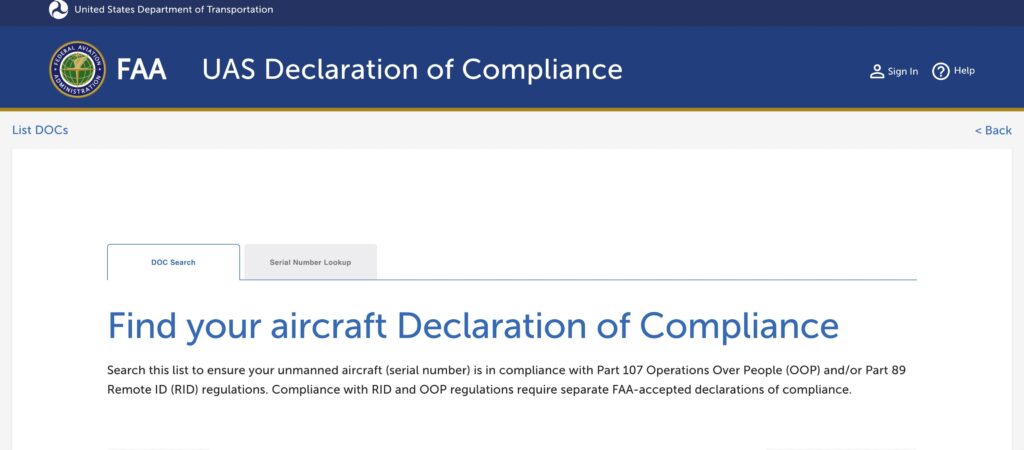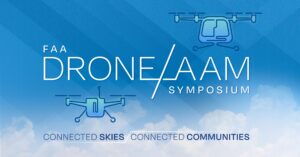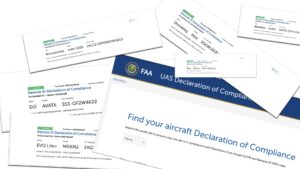While I think we can all agree that the amount of time it took for the FAA to announce the deferred enforcement plan for UAS operators under Remote ID, including some I’ve talked to inside the FAA (anonymously of course) is unacceptable to this industry, at least the deferment plan is now official.
After weeks of promising “soon”, or “later this week”, today the FAA announced that UAS operators who need to fly with Remote ID will be under a “Deferred Announcement” program, similar to what they did last year with the UAS manufacturers.
Official word is:
- The Remote ID operational compliance date remains September 16, 2023.
- For noncompliance with the remote identification operating requirements applicable to unmanned aircraft, which occurs on or before March 16, 2024, the FAA will consider all circumstances, including:
- Unanticipated issues with the available supply and excessive cost of remote identification broadcast modules
- Unanticipated delay in the FAA’s approval of FAA-recognized identification areas
- As a result, the FAA will exercise its discretion in determining whether to take enforcement action through March 16, 2024
- Drone pilots who are unable to comply with the broadcast requirement of the Remote ID Rule will now have until March 16, 2024, to equip their aircraft
- After March 16, 2024, operators who do not broadcast Remote ID could face fines and suspension or revocation of pilot certificates.
- The FAA recognizes the unanticipated issues that some operators are experiencing:
- The FAA has received significant public feedback regarding remote identification requirements, including multiple requests for an extension of the September 16, 2023, remote identification operational compliance date
- The FAA has received hundreds of inquiries through emails, phone calls, and in-person questions about the remote identification operational compliance date
- The FAA has also received feedback from operators, including numerous public safety agencies, about difficulties in obtaining firmware updates to some existing models of unmanned aircraft to activate standard remote identification capabilities and make them remote identification compliant
- The FAA anticipates that the supply of remote identification broadcast modules, resolution of firmware issues, and approval of FAA-recognized identification areas will increase in the next six months
Official Press Release:
PRESS RELEASE
FAA Extends Remote ID Enforcement Date Six Months
“Drone pilots who are unable to comply with the broadcast requirement of the Remote ID Rule will now have until March 16, 2024, to equip their aircraft. After that date, operators could face fines and suspension or revocation of pilot certificates.
In making this decision, the FAA recognizes the unanticipated issues that some operators are experiencing finding some remote identification broadcast modules.
Drone pilots can meet this deadline by purchasing a standard Remote ID equipped drone from a manufacturer or purchasing a Remote ID broadcast module which can be affixed to existing drones that do not have Remote ID equipment.
Remote ID acts like a digital license plate and will help the FAA, law enforcement, and other federal agencies find the control station when a drone appears to be flying in an unsafe manner or where it is not allowed to fly.
Learn more here“
When it comes to registering your drone once it does become RID compliant, you’ll need to update the serial number of the drone in the Drone Zone. To find your new serial number, go to the FAA’s UAS Declaration of Compliance page and search your drone model. Once you navigate to your model’s name, find the section under “Serial #:”. It will be a series of numbers that end in a bunch of zeros or letters. For instance on the DJI Mavic 3, it says “Serial #: 1581F45T000000000000 – 1581F45TFFFFFFFFFFFF”. The number you need to concentrate on is the first eight alpha/numeric characters of the chain. Copy and past just those first 8 characters into the serial number box as described below.
 Once you have that number, you’ll need to edit the serial number on that drone’s registration in the Drone Zone. In order to do that, navigate to your Part 107 Dashboard, and then open your Inventory portal. Filter you current drones by “Active”, then find the one you need to update. On the far right of the list, there will be three vertical dots by each drone. Click that and choose “Edit”. Once there, click “Yes” next to “DOES YOUR DRONE BROADCAST FAA REMOTE ID INFORMATION?*”, then add the prefix to your serial number under “REMOTE ID SERIAL NUMBER*”. You’ll also need to use the dropdown menu under “UAS TYPE*” and change your drone to “STANDARD REMOTE ID”.
Once you have that number, you’ll need to edit the serial number on that drone’s registration in the Drone Zone. In order to do that, navigate to your Part 107 Dashboard, and then open your Inventory portal. Filter you current drones by “Active”, then find the one you need to update. On the far right of the list, there will be three vertical dots by each drone. Click that and choose “Edit”. Once there, click “Yes” next to “DOES YOUR DRONE BROADCAST FAA REMOTE ID INFORMATION?*”, then add the prefix to your serial number under “REMOTE ID SERIAL NUMBER*”. You’ll also need to use the dropdown menu under “UAS TYPE*” and change your drone to “STANDARD REMOTE ID”.
Click “SAVE” and you’re done. You are now fully registered under “Standard RID”. Your FA number will not change, but you will need to print out a new registration card to carry its you so it reflects your new serial number.
If you are using an RID Module to become RID compliant, it’s a much simpler process.
Go back to your Drone Zone Inventory page, click the three dots again to edit, Click “YES” under “DOES YOUR DRONE BROADCAST FAA REMOTE ID INFORMATION?*” change your “UAS TYPE*” to “Remote ID Broadcast Module”, then put the serial number of your RID Module in the “REMOTE ID SERIAL NUMBER*” blank. Click “Save”, print our your new registration card, and you’re done. It’s that easy. You’ll find the RID Module serial number somewhere on your unit, usually with a barcode of QR code. It should also be in the paperwork of the RID unit when you receive it. So store that in a safe place and don’t lose it.
Remember, if you want to change that RID Module to a different crone registered under 107, you’ll need to change the “REMOTE ID SERIAL NUMBER*” in the Drone Zone each time. However, that will not change your FAA Registration number. At least not until XXXXXXX.
Hopefully this alleviates at least some of the confusion around RID for the 107 community. DSPA wishes the recreational and FPV communities good luck (especially the FPV communities) when it comes to RID.
Describing these processes in writing makes it sound more complicated that it really is. So Pilot Institute has published a great video here. If you have a visual learner, or you are just confused by my instructions, this should help.
While DSPA is an organization that advocates on behalf of 107 Pilots, we are also recreational and (to a lesser degree) FPV operators as well. If you are a recreational operator, you will be following similar steps to update your drones. For recreational Module RID compliance, you are allowed to move the module from UAS to UAS without changing your Drone Zone registration. At least that’s benefit about being a recreational operator during this mess.
DSPA is planning on working with other organization to attempt to get the FAA and Congress to offer some relief for FPV events. There is absolutely zero need for each and every FPV pilot to be flying an RID compliant drone at FPV events. It makes no sense whatsoever. This is what happens with Congress forces rules onto a hobby when the Congressional body has zero concept of how that hobby actually operates. DSPA will join the fight to attempt to get FPV RID rules changed.
Wish us luck!



Pingback: Enforcement of Remote ID for drones is extended by six months: Digital Photography Review
Pingback: Enforcement of Remote ID for drones is extended by six months: Digital Photography Review - ASPPA IMAGES ANO
Pingback: Enforcement of Remote ID for drones is extended by six months: Digital Photography Review – Photography News Hubb